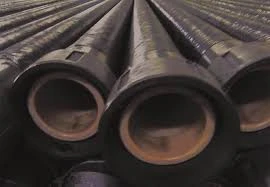
-
 Afrikaans
Afrikaans -
 Albanian
Albanian -
 Amharic
Amharic -
 Arabic
Arabic -
 Armenian
Armenian -
 Azerbaijani
Azerbaijani -
 Basque
Basque -
 Belarusian
Belarusian -
 Bengali
Bengali -
 Bosnian
Bosnian -
 Bulgarian
Bulgarian -
 Catalan
Catalan -
 Cebuano
Cebuano -
 China
China -
 China (Taiwan)
China (Taiwan) -
 Corsican
Corsican -
 Croatian
Croatian -
 Czech
Czech -
 Danish
Danish -
 Dutch
Dutch -
 English
English -
 Esperanto
Esperanto -
 Estonian
Estonian -
 Finnish
Finnish -
 French
French -
 Frisian
Frisian -
 Galician
Galician -
 Georgian
Georgian -
 German
German -
 Greek
Greek -
 Gujarati
Gujarati -
 Haitian Creole
Haitian Creole -
 hausa
hausa -
 hawaiian
hawaiian -
 Hebrew
Hebrew -
 Hindi
Hindi -
 Miao
Miao -
 Hungarian
Hungarian -
 Icelandic
Icelandic -
 igbo
igbo -
 Indonesian
Indonesian -
 irish
irish -
 Italian
Italian -
 Japanese
Japanese -
 Javanese
Javanese -
 Kannada
Kannada -
 kazakh
kazakh -
 Khmer
Khmer -
 Rwandese
Rwandese -
 Korean
Korean -
 Kurdish
Kurdish -
 Kyrgyz
Kyrgyz -
 Lao
Lao -
 Latin
Latin -
 Latvian
Latvian -
 Lithuanian
Lithuanian -
 Luxembourgish
Luxembourgish -
 Macedonian
Macedonian -
 Malgashi
Malgashi -
 Malay
Malay -
 Malayalam
Malayalam -
 Maltese
Maltese -
 Maori
Maori -
 Marathi
Marathi -
 Mongolian
Mongolian -
 Myanmar
Myanmar -
 Nepali
Nepali -
 Norwegian
Norwegian -
 Norwegian
Norwegian -
 Occitan
Occitan -
 Pashto
Pashto -
 Persian
Persian -
 Polish
Polish -
 Portuguese
Portuguese -
 Punjabi
Punjabi -
 Romanian
Romanian -
 Russian
Russian -
 Samoan
Samoan -
 Scottish Gaelic
Scottish Gaelic -
 Serbian
Serbian -
 Sesotho
Sesotho -
 Shona
Shona -
 Sindhi
Sindhi -
 Sinhala
Sinhala -
 Slovak
Slovak -
 Slovenian
Slovenian -
 Somali
Somali -
 Spanish
Spanish -
 Sundanese
Sundanese -
 Swahili
Swahili -
 Swedish
Swedish -
 Tagalog
Tagalog -
 Tajik
Tajik -
 Tamil
Tamil -
 Tatar
Tatar -
 Telugu
Telugu -
 Thai
Thai -
 Turkish
Turkish -
 Turkmen
Turkmen -
 Ukrainian
Ukrainian -
 Urdu
Urdu -
 Uighur
Uighur -
 Uzbek
Uzbek -
 Vietnamese
Vietnamese -
 Welsh
Welsh -
 Bantu
Bantu -
 Yiddish
Yiddish -
 Yoruba
Yoruba -
 Zulu
Zulu
fiberglass ducts demonstrate exceptional resistance against ...
The Exceptional Resistance of Fiberglass Ducts A Modern Solution for HVAC Systems
In the realm of heating, ventilation, and air conditioning (HVAC) systems, the choice of duct material plays a crucial role in determining performance, efficiency, and longevity. Among the various materials available, fiberglass ducts have emerged as an exceptional choice, demonstrating remarkable resistance against a multitude of factors that can compromise traditional ductwork. This article explores the benefits and features of fiberglass ducts, shedding light on their significance in modern HVAC applications.
Fiberglass ducts are composed of a composite of fiberglass reinforced with resin, which gives them unique properties that set them apart from metal or rigid board ducts. One of the standout characteristics of fiberglass ducts is their superb resistance to corrosion. Unlike metal ducts, which can succumb to rust and deterioration when exposed to moisture or certain air contaminants, fiberglass ducts remain unaffected by these environmental challenges. This corrosion resistance not only prolongs the life of the ducts but also ensures that air quality remains unaffected by the deterioration of materials.
Additionally, fiberglass ducts offer exceptional thermal insulation. The structure of fiberglass inherently provides its excellent insulation properties, meaning that they reduce heat loss or gain more effectively than traditional metal ducts. This characteristic enhances the overall efficiency of HVAC systems, allowing for more consistent temperature control while simultaneously reducing energy consumption and costs. In a world increasingly focused on energy sustainability, utilizing fiberglass ducts can be a significant step toward reducing one's carbon footprint.
fiberglass ducts demonstrate exceptional resistance against ...

Moreover, fiberglass ducts exhibit remarkable fire resistance. They are designed to meet strict fire safety codes, thereby offering peace of mind in terms of safety. The fire-retardant properties of fiberglass ensure that in the event of a fire, the ducts will not contribute to the spread of flames or smoke, an essential feature in residential and commercial buildings alike. This intrinsic safety characteristic makes fiberglass ducts a preferred choice, especially in environments where fire safety is paramount.
Another outstanding advantage of fiberglass ducts is their lightweight nature, making them easier to handle and install than traditional duct materials. This reduced weight lessens the overall stress on building structures, necessitating less robust supporting systems, and thus lowering installation costs. The ease of installation also allows HVAC professionals to work more efficiently, delivering quicker project timelines and reducing labor costs.
Furthermore, fiberglass ducts offer unparalleled acoustic insulation properties. Noise reduction is often a critical factor in the design of HVAC systems, particularly in settings such as offices, schools, and hospitals. The sound-absorbing qualities of fiberglass ducts help to create a quieter indoor environment, thereby enhancing comfort for the occupants.
In conclusion, fiberglass ducts represent a modern solution that addresses many of the limitations posed by traditional duct materials. Their exceptional resistance to corrosion, superior thermal and acoustic insulation, fire safety, and ease of installation make them an ideal choice for contemporary HVAC applications. As industries strive to achieve greater energy efficiency and improve air quality, the adoption of fiberglass ducts can play a pivotal role in transforming HVAC systems for both residential and commercial spaces. Investing in fiberglass duct technology not only enhances system performance but also contributes to a safer and more sustainable future.
Latest news
-
Exploring the Benefits of Top Hammer Drifter Rods for Enhanced Drilling PerformanceNewsJun.10,2025
-
High-Precision Fiberglass Winding Machine for GRP/FRP Pipe Production – Reliable & Efficient SolutionsNewsJun.10,2025
-
FRP Pipes & Fittings for Shipbuilding - Corrosion-Resistant & LightweightNewsJun.09,2025
-
Premium FRP Flooring Solutions Durable & Slip-ResistantNewsJun.09,2025
-
Premium Fiberglass Rectangular Tanks Durable & Lightweight SolutionNewsJun.09,2025
-
Tapered Drill String Design Guide Durable Performance & UsesNewsJun.09,2025









